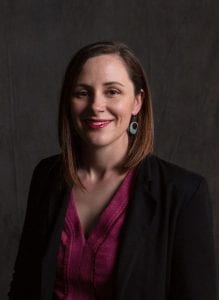
Brandi Lawless, Associate Professor and Chair of the Department of Communication Studies, has co-authored a new book with Yea-Wen Chen of San Diego State University.
The motivation for my new co-authored book is three-fold. First, Intercultural Communication is one of the top 3 most-offered communication classes across the country, often fulfilling Core/General Education requirements for cultural diversity. However, most instructors who teach the class are only taught how to teach Public Speaking (if they receive pedagogical training at all) and are not specifically taught intercultural communication, which is quite different. Second, some instructors are even handed the class because they look “intercultural,” which unfairly saddles instructors of color and international instructors with additional pedagogical burdens without having excellent resources with which to teach this class. Third, even for the most experienced and knowledgeable instructors, the intercultural communication classroom can be an emotionally and intellectually heavy place for many students and teachers, like other classes that also fulfill our Cultural Diversity (CD) requirement. Sensitive topics arise and students must face complex issues with intellectual curiosity and collegial respect. To navigate the precarious waters of intercultural communication, teachers need an intentional, proactive approach to foster meaningful discussion and learning.
After struggling to teach this type of course and navigate the difficult conversations in each class, my co-author and I created this book as a sort of pedagogical guide. Each chapter presents conceptual overviews, student activities, and problem-solving strategies for teaching intercultural communication. We work our way through eight categories of potential conflict, including: communicating power and privilege, community engagement in social justice, and assessing intercultural pedagogies for social justice. In addition to empirical studies and our own classroom experiences, our book features personal narratives of junior and senior intercultural communication teacher-scholars whose journeys will encourage and instruct readers towards more fulfilling teaching experiences. We wrote this book so that anyone could pick it up and have a stronger foundation for teaching these topics. It is well suited for new and continuing instructors of courses that teach about culture, diversity, and social justice (particularly Intercultural Communication) and for graduate students learning how to teach these topics.
I’m excited to use the principles of this book in my own teaching, more intentionally. I have yet to teach Intercultural Communication since the publication of the book, but have been rethinking the content and structure for the next time I teach the course. I’m anxious to hear feedback from others and to continue to grow in my pedagogical approach.